Florida Burrowing Owls are peculiar birds compared to their relatives. They don’t fit the mold of nearly every other owl!
They live underground, stay active for most of the day, and live in family units. These Floridians have a darker overall aspect of their plumage and are smaller than their western cousins. Maybe getting a little more tan from the sun, not too different from some other Floridians…
Their populations here in Florida are on the decline, but many projects have been created to help these little birds. They even seem to be adapting to manmade structures and residential areas.
Because of their massive distribution, 18 subspecies are recognized across Canada, the United States, Mexico, multiple Caribbean islands, and Central and South America.
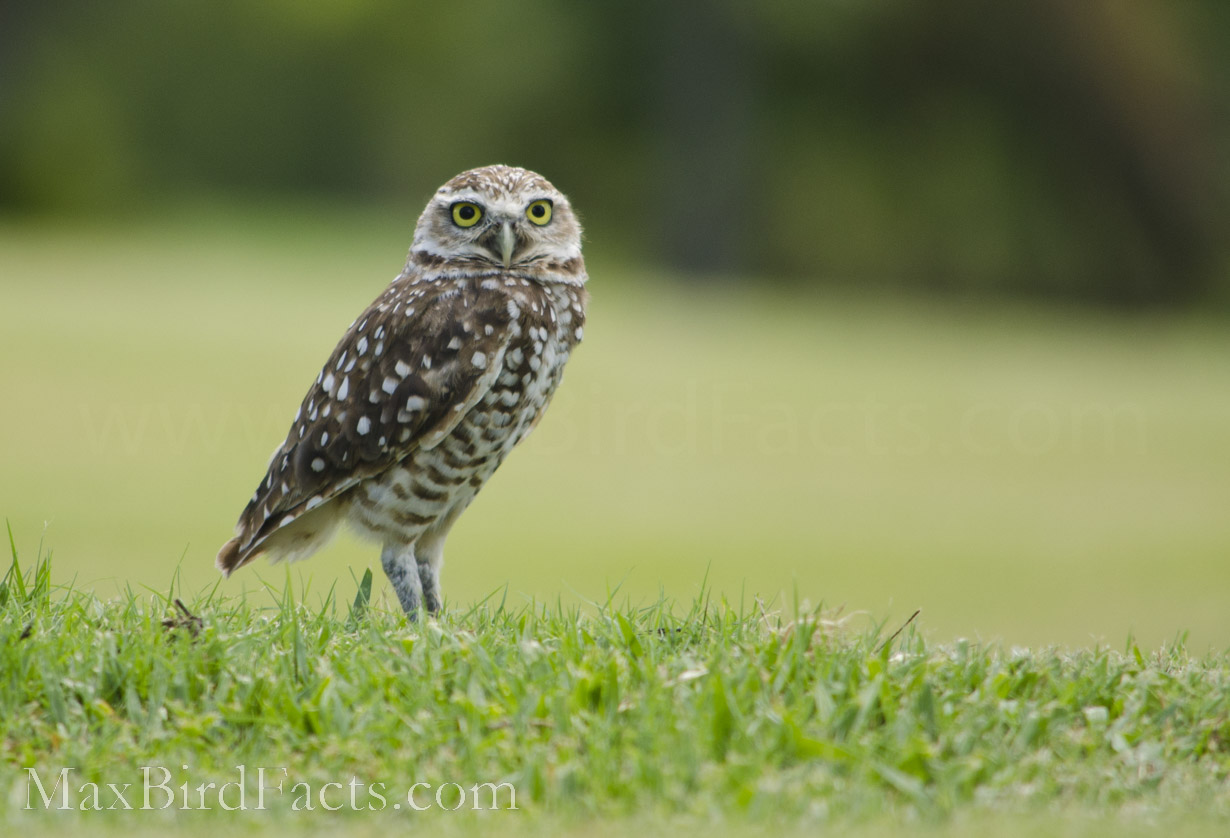
I will talk a little bit about the western populations. But I don’t have any images of them, and I don’t want to misrepresent these birds with photos of their Floridian brethren.
For this article, we will focus primarily on the Florida Burrowing Owl, Athene cunicularia floridana!
Hunting Behavior
Burrowing Owls are much more diurnal than other owls, but they still retain the adaptations for hunting at night.
Excellent eyesight and even better hearing help these birds hone in on their prey during moonless nights. Their ability to hunt during the day can help reduce competition with larger nocturnal hunters.
For instance, Burrowing Owls are about the same size as a large songbird, 7-10 inches tall, and only a third of a pound (5.3 oz). Compare this to a Great Horned Owl, which can grow over two feet tall and weigh up to 5.5 pounds (88 oz)! It wouldn’t be much of a matchup if a larger owl wanted to steal the prey a Burrowing Owl captured.
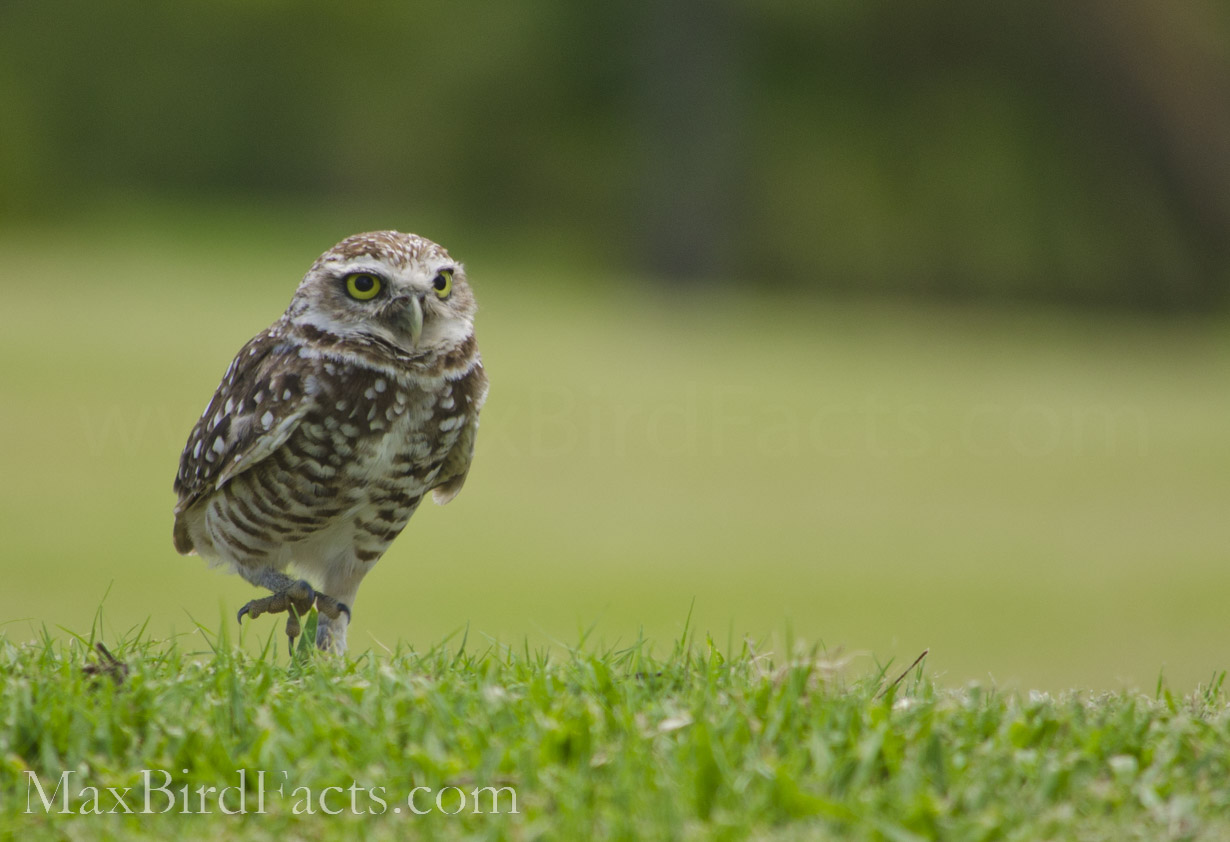
Staying in open areas also makes it easier for these owls to find their prey and spot predators. Their diet is primarily insects, but they also hunt small birds, mammals, reptiles, and amphibians.
Burrowing Owls will perch high up, overlooking sparsely vegetated fields and wide-open areas. Once they spot their prey, they will take flight and pounce on it.
They aren’t limited to swooping down on prey, though. These owls can effortlessly chase down flying insects or outrun a speedy lizard. Their long legs are central to this.
Comparative to their body size, Burrowing Owls have incredibly long legs. Being higher up helps them survey their area better so they can spot both prey and predators.
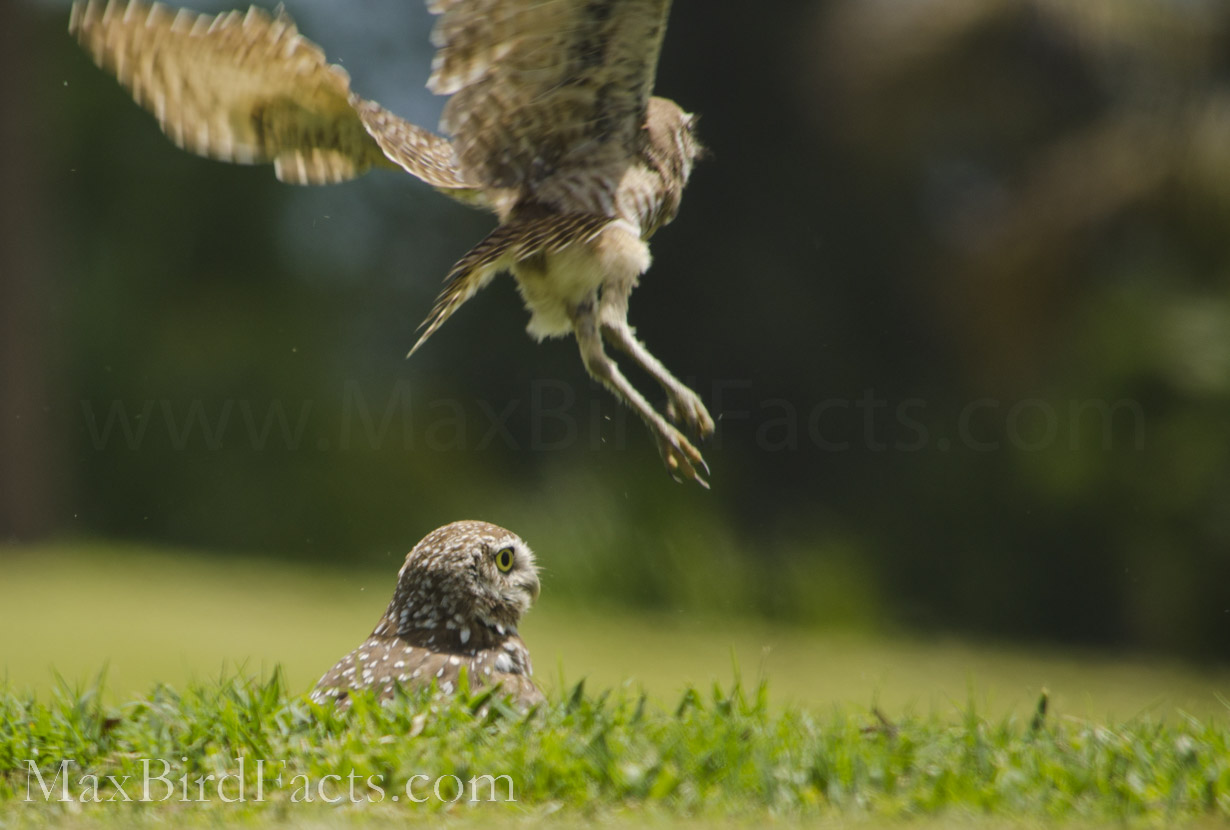
Their long legs increase this bird’s stride length, allowing them to quickly close the distance to their prey. The size of the legs also enables them to have a faster takeoff time. Using their legs as springs, they can leap from the ground and take flight suddenly to catch their prey or flee predators.
The Burrow
Surprisingly, Burrowing Owls typically don’t make their burrows. They have the ability to dig their own homes, but it is much easier to take an abandoned one.
Western populations of Burrowing Owls can be found near Prairie Dog towns. They will commonly take up abandoned burrows created by the rodents and sometimes take larger ones made by foxes and coyotes.
These owls can make adjustments to their new homes as needed, even expanding the burrow up to eight feet long! In this way, they can make their separate rooms for different needs.
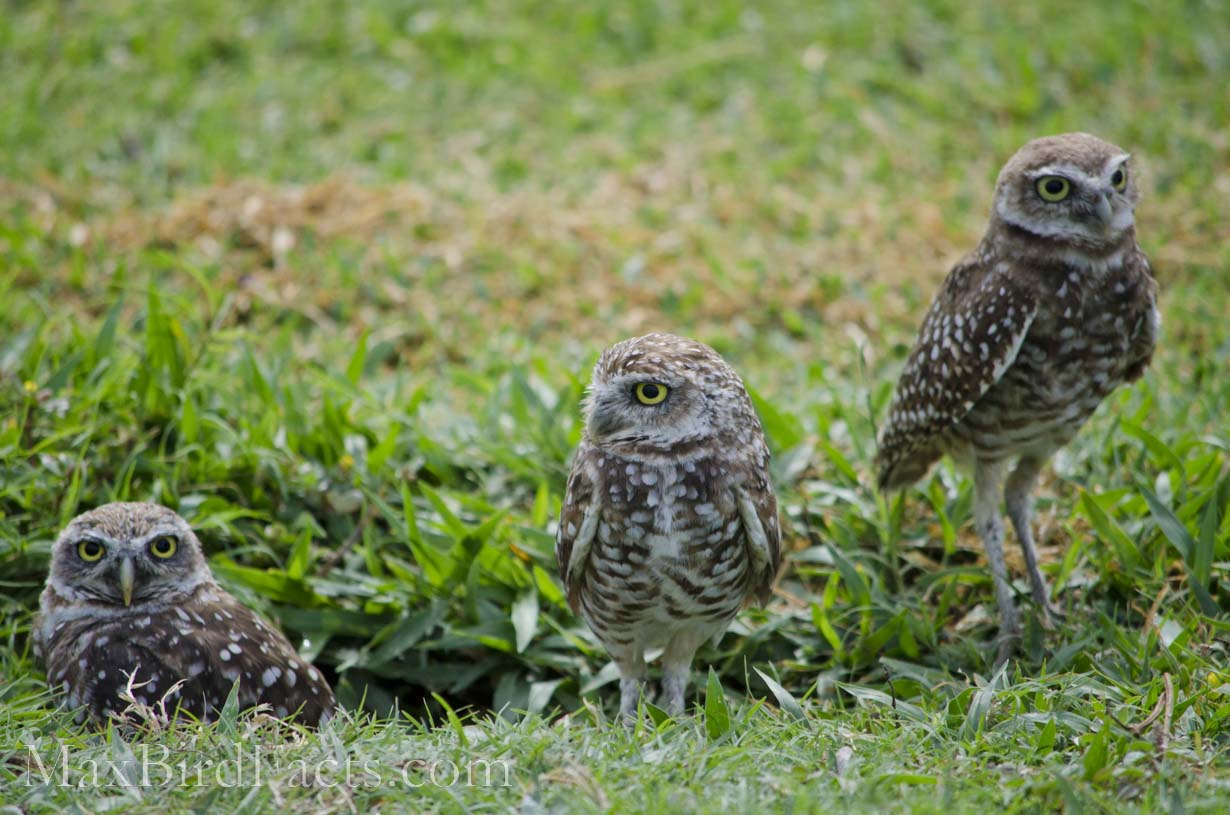
These burrows aren’t just for nesting. They can use them to store food when times are good. During times of shortage, these food stores will be massively beneficial!
During nesting, the parents will bring animal droppings to the entrance of the burrow. Attracting insects, allowing them to get food for their young without having to leave the nest.
Nesting on the ground leaves the young birds vulnerable. This behavior allows the parents to stay and protect their young while also collecting the food they need to develop.
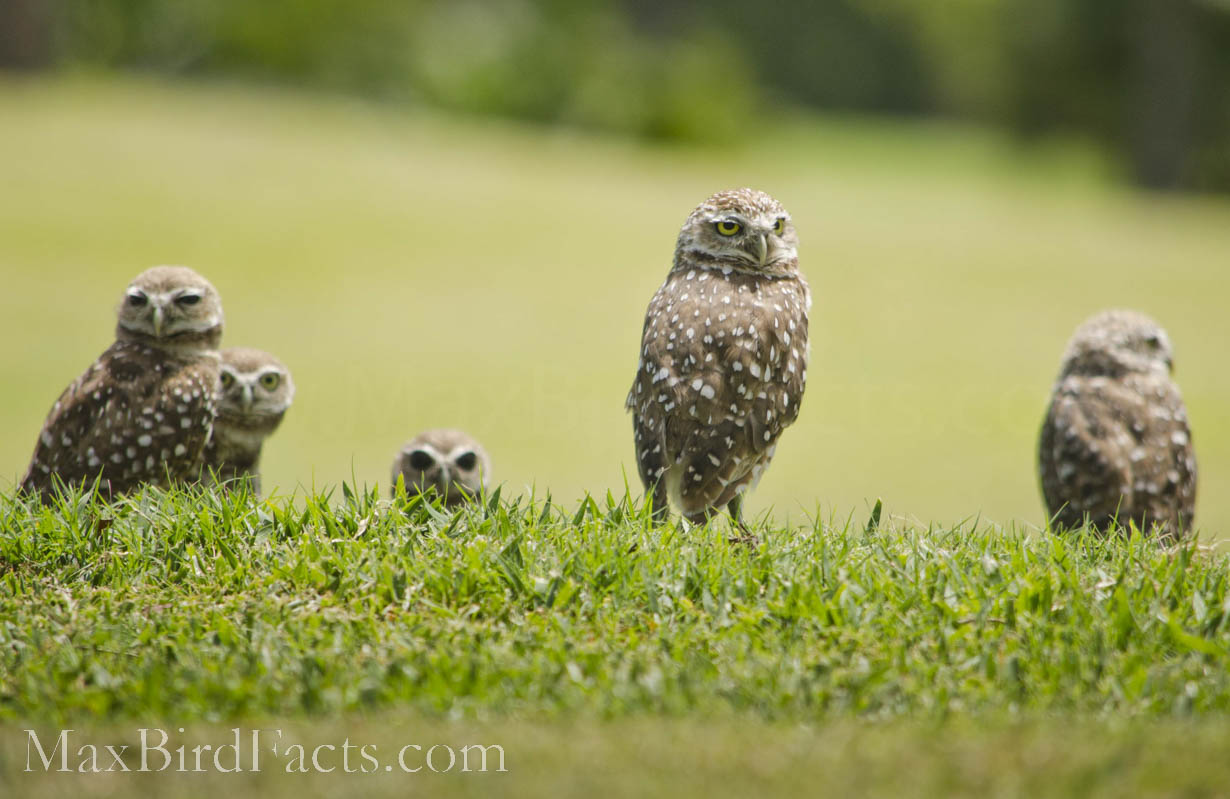
Both parents will help to raise the chicks. The mother will usually stay in or near the nest to feed and care for the young.
The father will stay perched near the nest, keeping watch for threats and extra prey. He will also defend and maintain the territory from rival males through vocalizations and visual displays.
Athene cunicularia floridana
The Florida subspecies of Burrowing Owls have some interesting differences from the other populations. Florida owls don’t migrate, typically burrow their own homes, and show a rare trait among these birds!
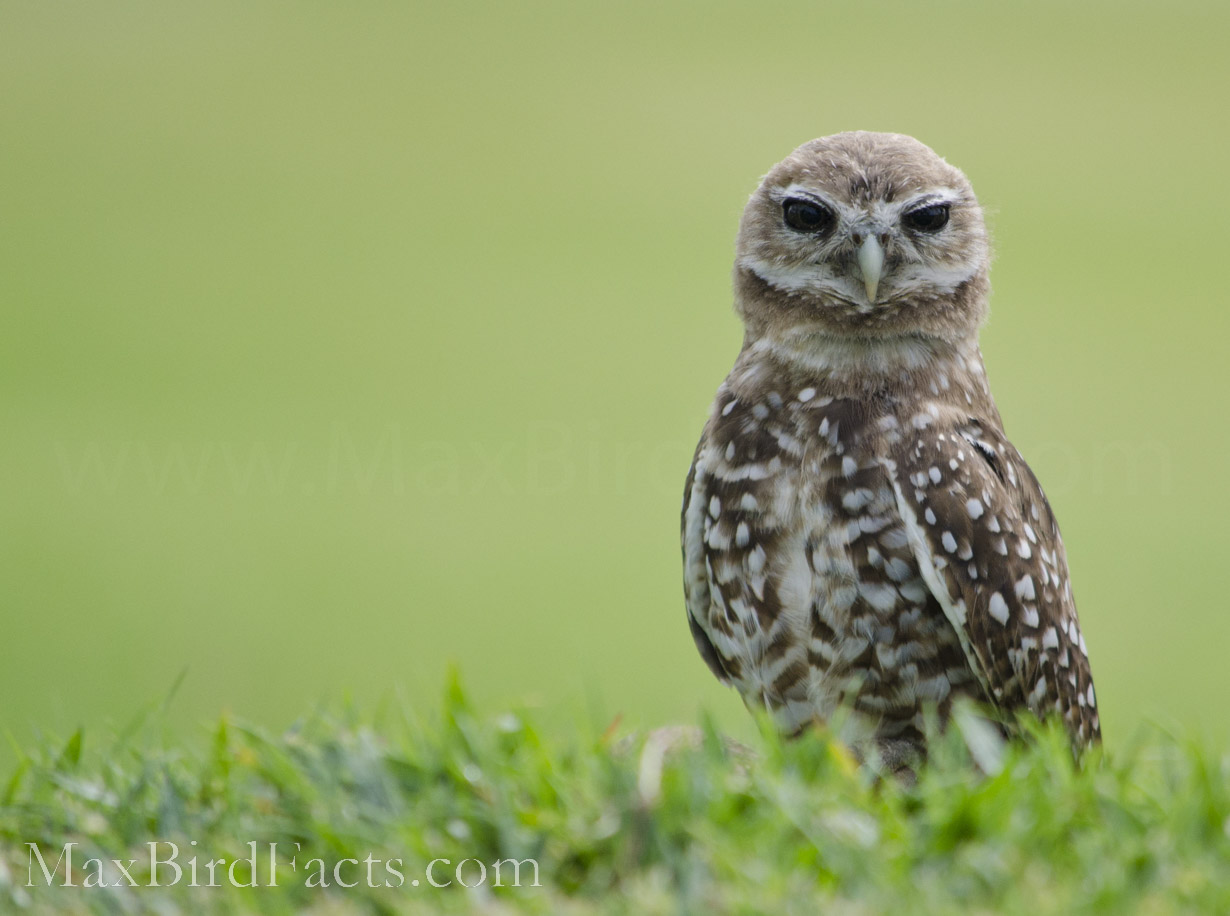
Before we get into this trait, here is a crash course on dominant versus recessive traits.
Dominant traits are shown over a recessive one if present in the individual’s genome at any level. The genetic material that encodes the information for these traits are called alleles.
The offspring will receive one allele from each parent, and this will be what causes variance between the parents and their young. This is important to know because for an individual to show a recessive trait, both parents need to have that allele type in their genome.
Just think of yourself and your parents. It is reasonable to assume that parts of your appearance look similar to your mother’s, and others are more like your father’s.
If you have green eyes, red hair, or a number of other traits, you have two recessive alleles. Neither of your parents might show these traits, and they are just a carrier of the recessive allele.
Florida Burrowing Owls have a much higher proportion of showing brown eyes compared to western populations. The trait of brown eyes is exceedingly recessive and very rare in non-Florida groups.
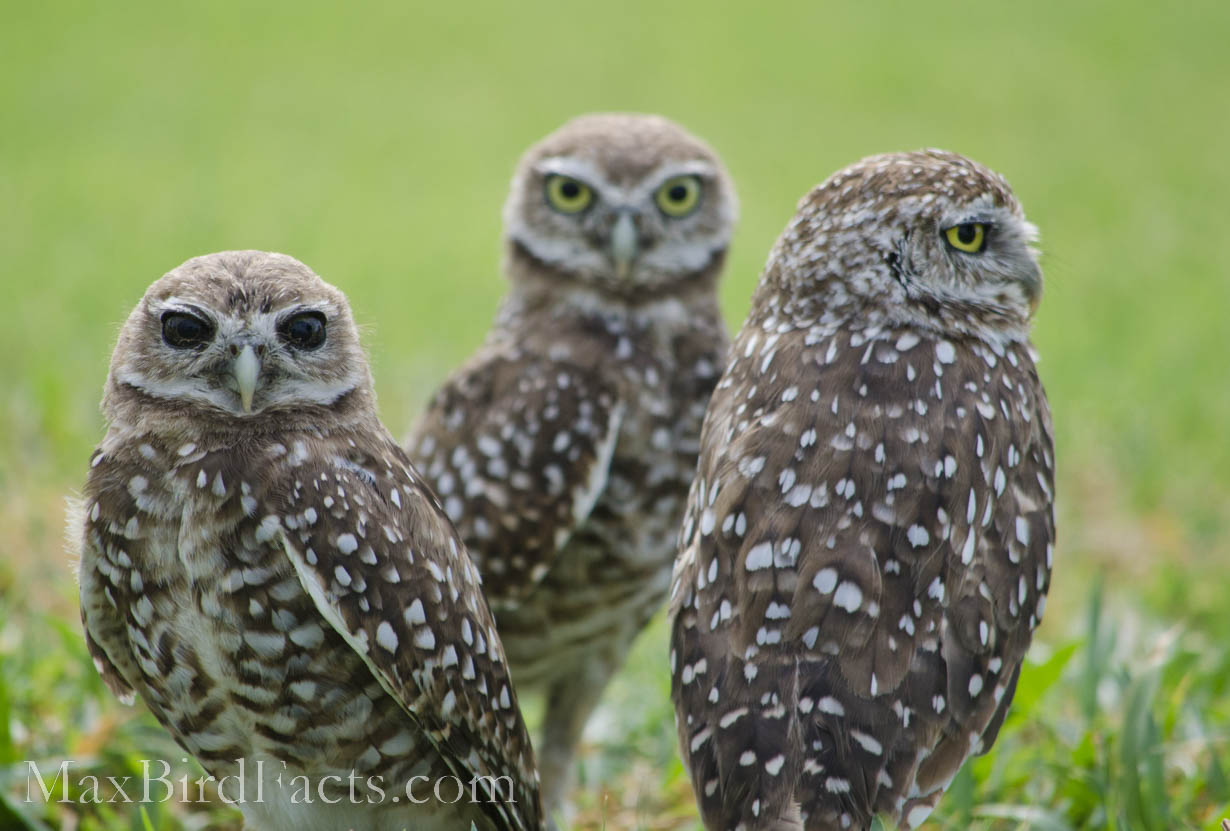
The dominant eye color is yellow, and nearly every other subspecies only show this. Because the Florida population of these owls is so small, this makes the brown eyes more common.
Remaining isolated by not migrating also keeps this trait from being buried as well. In North America, the vast majority of Burrowing Owls reside in the Great Plains region.
They will migrate north into Canada and northern states to nest in the summer and migrate south into Mexico to avoid the brutal winter.
Florida Burrowing Owls have stayed residents for long enough to differentiate from their western cousins. This is apparent in both their appearance and behavior.
Florida owls are a little smaller than other Burrowing Owls. This isn’t uncommon with isolated or island populations. A smaller body size requires fewer resources to survive.
It also means they can spend less energy making the burrow because it won’t have to be very large. The only reason I can think of the difference in aspect would be produced by natural selection to be a better camouflage.
Lighter colored feathers may have stuck out more in their environments and made them easier targets for predators to spot. Over time, the survivors who could hide better would be the only ones producing offspring, which will lead to the new appearance of the bird.
Their range used to be throughout South Florida, including the Keys, and up into North Central Florida. However, human development has taken over much of the areas they are adapted to survive in.
Adapting to Man
Burrowing Owls have been seen using human structures in areas where they don’t have access to burrows. Pipes, abandoned buildings, and cracked foundations all are sufficient stand-ins for Prairie Dog towns.
Obviously, these aren’t ideal homes for these birds, but the fact they are adapting is an excellent sign for these birds’ survival. The Floridians will also happily take up residence in peoples’ yards and vacant lots.
In southern Florida, there are multiple programs to help increase Burrowing Owl numbers, like Project Perch. They also have been given protected status in this state with fines in place for harassing or harming these birds.
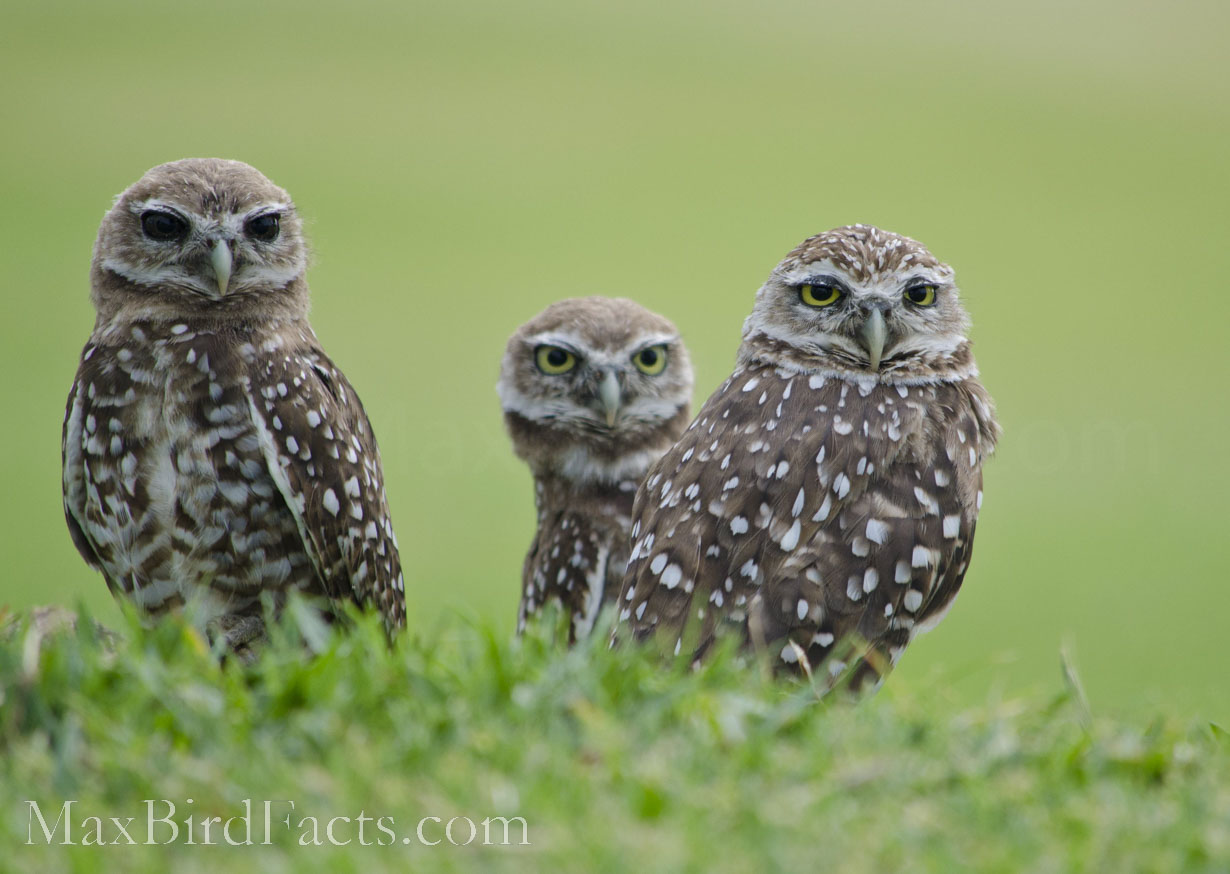
All of these images were actually from a golf course in Marathon Key, FL in 2012. They are more than happy to take any available land when they can find it, and some people go out of their way to make their yards suitable for them.
If you live in South Florida or an area where Burrowing Owls reside, you can do some things to attract these owls to come to your yard. Help them out by clearing out a spot free of grass, loosening the soil in an area, putting up something for them to perch, or even giving them a helping hand and starting the hole by digging a foot or so deep at a shallow slope.
If we can all be like this, we can keep enjoying these strange little birds. I hope you learned something new from reading this! If you have any suggestions for future articles, please leave a comment below!
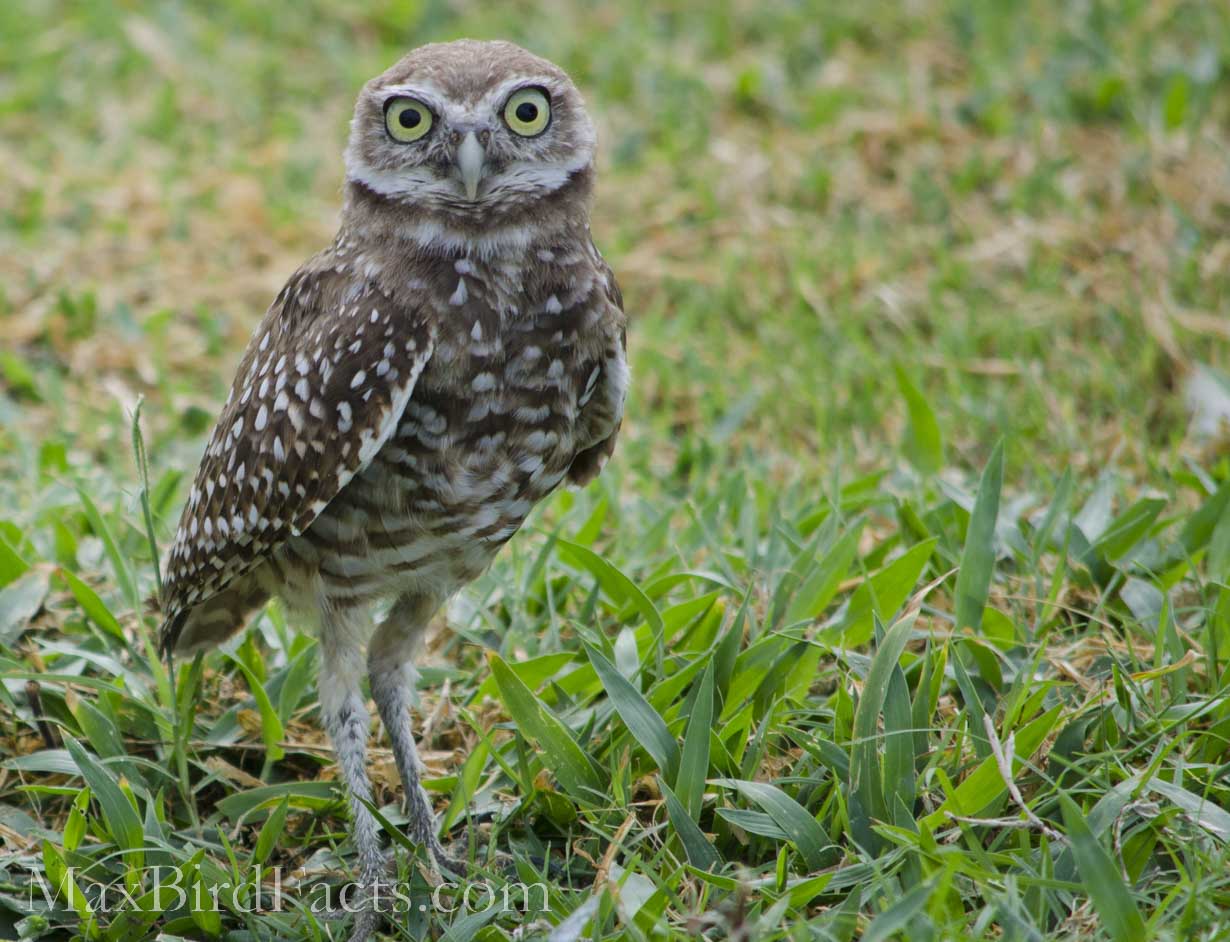
Thanks for taking the time to read this and make today great!
– Max
Resources
“Burrowing Owl Overview.” All About Birds, The Cornell Lab of Ornithology, 2019, www.allaboutbirds.org/guide/Burrowing_Owl/overview.
Carnevale, Shannon. “Florida’s Burrowing Owl.” UF/IFAS Extension Polk County, 17 Feb. 2017, blogs.ifas.ufl.edu/polkco/2017/07/07/floridas-burrowing-owl/.
“Great Horned Owl Identification.” All About Birds, The Cornell Lab of Ornithology, 2019, www.allaboutbirds.org/guide/Great_Horned_Owl/id.
Weidensaul, Scott. “Where Burrowing Owls Are Your Neighbors.” Audubon, 21 Jul. 2020, www.audubon.org/news/where-burrowing-owls-are-your-neighbors.
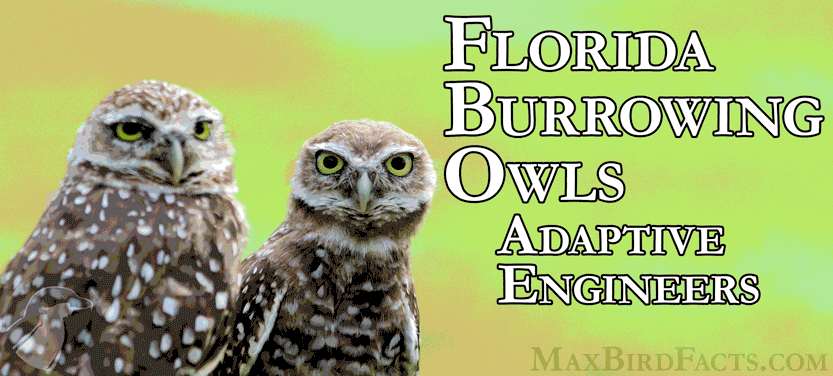
Pingback: Why Do Owls Hoot – 4 Reasons To Sing – Welcome to MaxBirdFacts.com!!!
Pingback: Grackle vs Blackbird – 3 Easy to Remember Features to Look Out For When Identifying – Welcome to MaxBirdFacts.com!!!